Understanding Intellectual Property (IP) Disclosures
Definition and Importance of IP Disclosures
Intellectual property (IP) disclosures refer to publicly revealing information about inventions, innovations, designs, or trademarks in a manner consistent with applicable laws and regulations. They serve a critical role in protecting the rights of inventors and creators, fostering transparency, and encouraging innovation within various industries.
Disclosures are essential for several reasons. First, they help establish the timeline of an invention, which can be critical when filing for patents. Second, they allow stakeholders, including investors and partners, to understand the scope and potential value of the IP. Lastly, effective disclosures build trust among collaborators and the public by demonstrating the proper management of proprietary information.
Moreover, IP disclosures can serve as a marketing tool, showcasing a company’s commitment to innovation and its competitive edge in the marketplace. By publicly sharing information about their advancements, organizations can attract potential collaborators and customers who are interested in the latest developments in their field.
Different Types of IP Disclosures
There are several types of IP disclosures that organizations may encounter, each with its specific characteristics and requirements. Here are the primary categories:
- Patent Disclosures: Required to protect inventions and secure patent rights.
- Trademark Disclosures: Used to communicate the branding aspects of products or services.
- Copyright Disclosures: Necessary for protecting creative works such as art, literature, and music.
- Trade Secret Disclosures: Often involve nondisclosure agreements (NDAs) to protect confidential information.
Employing an appropriate type of disclosure is crucial since each serves different legal purposes and carries distinct implications for IP protection. For instance, patent disclosures must be sufficiently detailed to allow someone skilled in the art to replicate the invention, while trademark disclosures focus on the distinctiveness and usage of a mark in commerce. Additionally, the landscape of IP disclosures is constantly evolving, particularly with the rise of digital technologies and the internet. Organizations must stay abreast of changes in laws and regulations that may affect how they disclose their IP, ensuring compliance while maximizing their protective measures. As businesses increasingly operate on a global scale, understanding the nuances of IP disclosures in different jurisdictions becomes even more vital, as varying international laws can significantly impact the effectiveness of their strategies.
Preparing for an IP Disclosure
Gathering Essential Information
Preparation is key to making effective IP disclosures. The first step involves gathering comprehensive and accurate information related to the IP in question. This may include details such as:
- The scope of the invention or innovation.
- Functional aspects and potential applications.
- Unique features that distinguish it from existing products.
- Research and development history.
Having this data organized helps streamline the disclosure process and ensures all necessary information is provided for an accurate evaluation of the IP. Additionally, it is beneficial to include any relevant market research that highlights the demand for innovation. Understanding the competitive landscape can also provide context for the IP’s potential value, making it easier for evaluators to see its significance. Furthermore, documenting any preliminary testing results or user feedback can bolster the case for the IP’s viability and market readiness, showcasing its practical applications and advantages over existing solutions.
Identifying the Right Time for Disclosure
The timing of an IP disclosure is a critical factor in its success. Making disclosures too early can lead to lapses in protection while waiting too long may hinder collaboration opportunities. Organizations should consider disclosing IP in the following situations:
- When seeking funding from investors or strategic partners.
- Before entering negotiations for licensing agreements.
- At industry conferences or trade shows to showcase innovations.
Deciding the right moment is a balance between strategic goals and the nature of the IP itself. It is also important to monitor industry trends and emerging technologies, as these can influence the timing of your disclosure. For instance, if a competitor is developing similar technology, it may be prudent to disclose your IP sooner to establish your position in the market. Additionally, engaging with legal and intellectual property experts during this phase can provide insights into the best practices for timing disclosures, ensuring that all legal protections are in place before revealing sensitive information to potential partners or the public.
Crafting an Effective IP Disclosure
Key Elements to Include
An effective IP disclosure document should contain several key elements to ensure clarity and completeness. These elements typically include:
- Title: A clear title that reflects the nature of the invention or creation.
- Abstract: A summary that encapsulates the main features and benefits of the IP.
- Background Information: Contextual information that provides insight into existing solutions and the problem being addressed.
- Detailed Description: Comprehensive details, including diagrams or illustrations if applicable.
- Claims: Specific points that outline what is being protected and how.
Each element serves to bolster the overall quality of the disclosure and improve its chances of successful protection and acceptance. The title, for instance, should not only be descriptive but also engaging, as it sets the tone for the reader’s first impression. The abstract must be succinct yet informative, allowing stakeholders to quickly grasp the essence of the IP without wading through excessive detail. In the background information section, it is beneficial to highlight not only the shortcomings of existing solutions but also how your invention offers a unique advantage, thereby positioning it as a valuable contribution to the field.
Common Mistakes to Avoid
Even well-intentioned disclosures can suffer from pitfalls that affect their efficacy. Here are some common mistakes to watch for:
- Inadequate documentation: Failing to provide sufficient detail can lead to misunderstandings or disputes.
- Omitting legal nuances: Neglecting to consider relevant laws can jeopardize the protection of the IP.
- Lack of review: Bypassing multiple rounds of review may result in errors that could have been caught.
A proactive approach, coupled with thorough checks and expert input, can significantly mitigate these risks. Additionally, it is crucial to ensure that the language used is precise and unambiguous, as vague terms can lead to varied interpretations that may weaken the legal standing of the IP. Engaging with legal professionals who specialize in intellectual property can provide invaluable insights and help navigate the complexities of IP law. Furthermore, involving technical experts during the drafting process can enhance the accuracy of the detailed description, ensuring that all innovative aspects are thoroughly documented and accurately represented.
Legal Considerations in IP Disclosures
Understanding IP Laws and Regulations
A solid foundation in IP laws and regulations is vital for individuals and organizations involved in IP disclosures. Different jurisdictions have varying laws that govern the disclosure process, and understanding these can prevent potential legal issues. The landscape of intellectual property law is continually evolving, influenced by technological advancements and global trade agreements. Therefore, staying informed about these changes is crucial for effective IP management.
Key legal principles to consider include:
- The definition of protectable IP in the relevant jurisdiction.
- Statute of limitations for filing patents or trademarks.
- Confidentiality agreements are necessary for protecting trade secrets.
Awareness of these elements fosters informed decision-making throughout the disclosure process. Furthermore, organizations must also consider international treaties, such as the Agreement on Trade-Related Aspects of Intellectual Property Rights (TRIPS), which sets minimum standards for IP protection globally. Understanding these treaties can help businesses navigate cross-border disclosures effectively and avoid unintentional infringements.
Ensuring Compliance in IP Disclosures
Compliance with established IP laws is a nonnegotiable aspect of effective disclosures. Recognizing the required steps for compliance can shield organizations from legal disputes and further their credibility. Key compliance measures include:
- Conducting a predisclosure risk assessment to identify potential legal barriers.
- Engaging legal counsel to review the disclosure before it is made public.
- Keeping up to date with changes in relevant laws and best practices.
Taking these actions promotes a culture of compliance and enhances the integrity of the organization’s IP strategy. Additionally, organizations should implement training programs for employees to ensure they understand the importance of IP compliance and the specific protocols for disclosures. This proactive approach not only mitigates risks but also empowers staff to recognize and report potential IP issues before they escalate. Regular audits of IP practices can further reinforce compliance, allowing organizations to adapt to new legal challenges and maintain robust protection for their intellectual assets.
Managing IP Disclosures in International Contexts
Navigating Different IP Laws Globally
In an increasingly globalized world, managing IP disclosures requires navigating a complex web of international laws. Organizations must recognize that IP rights are often jurisdiction-specific, meaning what works in one country may not apply in another. This complexity is further compounded by the rapid pace of technological advancement, which can outstrip existing legal frameworks and create uncertainties in IP protection.
Key considerations when disclosing IP internationally include:
- Understanding international treaties such as the Paris Convention and the TRIPS Agreement.
- Considering the patent and trademark application processes across different nations.
- Assessing cultural nuances that impact business practices and disclosures.
A comprehensive approach that factors in international legal frameworks can reduce risks and enhance global collaboration. Furthermore, organizations should be aware of the varying enforcement mechanisms in different countries, as some jurisdictions may have robust systems for protecting IP rights, while others may lack the necessary infrastructure. This disparity can significantly influence an organization’s strategy when entering new markets or engaging in cross-border partnerships.

Tips for International IP Disclosures
When disclosing IP in international contexts, consider these best practices to bolster effectiveness:
- Conduct thorough due diligence on local IP laws before proceeding with any disclosures.
- Build relationships with local legal experts to navigate complexities in foreign jurisdictions.
- Utilize translated documentation to ensure clarity in communication.
These steps can pave the way for successful IP management on an international scale, ensuring that IP rights are appropriately protected regardless of geographical boundaries. Additionally, organizations should consider establishing a centralized IP management system that can adapt to various legal environments while maintaining compliance with local laws. This system can serve as a repository for all IP-related information, making it easier to track disclosures, monitor compliance, and respond to potential infringements swiftly.
Moreover, fostering a culture of IP awareness within the organization can significantly enhance the effectiveness of these strategies. Training employees on the importance of IP protection and the specific legal requirements in different countries can empower them to make informed decisions when it comes to disclosures. This proactive approach not only mitigates risks but also promotes innovation by encouraging employees to share ideas and collaborate across borders with confidence in their IP rights.
Conclusion
In conclusion, best practices for IP disclosures revolve around understanding the components and implications of the disclosure process. By being well-prepared and informed about the rules governing intellectual property, organizations can navigate the challenges of IP disclosures effectively. Emphasizing clarity in documentation, respecting legal frameworks, and adapting to international contexts can enhance the protection of intellectual property while fostering innovation and collaboration.
Computer Packages Inc. (CPI) is a privately owned IP management company with over fifty years of experience serving the IP community. Our mission is to be the most trusted partner in safeguarding clients’ IP assets with innovative IP management software and annuity services. Learn how we specialize in IP patent, trademark, and annuity management by exploring our services.


